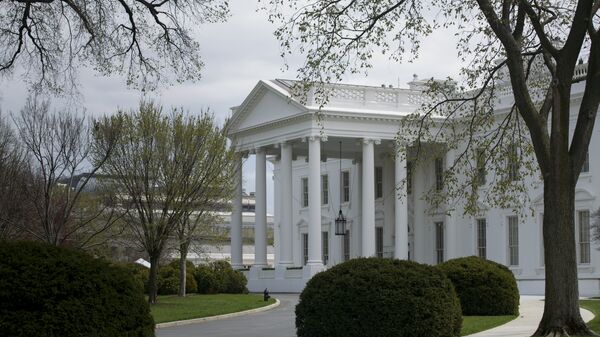Kristian Rouz — After several months of drafting and adjusting the contours of domestic economic policy, the Trump administration has turned its eyes to foreign trade, aiming to deliver on Donald Trump's pledges he made on his electoral campaign trail.
While Trump's domestic fiscal and monetary policies are aimed at boosting the production of finished goods, and the generation and accumulation, rather than the redistribution, of wealth, the White House's vision of US involvement in international trade is more specific. The administration said they are commencing the renegotiation of NAFTA, a trade agreement with Mexico and Canada, as well as reworking the existing trade deal with South Korea, and ending mainland China's dumping practices in its sale of steel to the US.
On Wednesday, the White House said it is seeking to renegotiate the existing trade framework with South Korea, an Asian nation exporting, primarily, automotive vehicles and electronics in the United States. In 2012, then-President Barack Obama signed a trade deal that allowed South Korea to boost exports to the US, while their imports from the US, mainly in airplanes and food, have remained subdued.
In these five years, the US trade deficit with South Korea has expanded from $7.7 bln in 2012 to the current $17.6 bln, as Korean cars and smartphones are very competitive in the US consumer market.
The Trump administration is aiming to tackle the bloated US trade deficit, and the President himself reiterated that he is focusing on achieving a trade surplus, mostly in manufactured "Made in the USA" goods, a purely mercantilist target, which is deemed achievable within an altered set of international trade deals rather than sheer protectionism and prohibitive customs tariffs.
"For many, many years, the United States has suffered through massive trade deficits… We'll be changing that," Trump said when he met with South Korean President Moon Jae-in.
The Trump administration aims to hike import tariffs, while dropping export tariffs to near-zero, thus stimulating outbound trade and narrowing the existing trade deficit.
US-Chinese trade is another issue addressed by Trump recently. Trump said mainland China's practice of dumping steel is a "big problem" — the President was talking about China selling steel at a lower-than-average price in the international market in order to wipe out the competition.
"They're dumping steel and destroying our steel industry, they've been doing it for decades, and I'm stopping it. It'll stop," Trump said during his currently ongoing visit to France. "There are two ways: quotas and tariffs. Maybe I'll do both," he added.
Trump's approach to mainland China is thus more protectionist, as the President seems to have little confidence he could reach a trade deal with China beneficial for the US. However, if Trump slaps China with higher tariffs and/or quotas, it opens lucrative opportunities for the world's other leading steel manufacturers, including the UK and Russia.
Historically, mercantilism was based on the principle that monetary reserves (usually gold) should be accumulated within a national economy, which would then enjoy a competitive edge over other nations, and by achieving and maintaining a positive foreign trade balance sheet. Trump's agenda of resuscitating the US manufacturing and energy sectors, boosting exports and tightening a grip on imports falls in line with this concept, while his willingness to negotiate reflects him as hardly a staunch proponent of unilateral severing trade ties.
Next month, the White House plans to start the process of renegotiating NAFTA, especially US-Mexican trade. Trump's goal is to ensure that new trade rules with Canada and Mexico will help restore US manufacturing. However, US agriculture has enjoyed roughly two decades of almost unrestricted exports to Mexico and Canada, and Trump will have to put an effort into maintaining that advantage.
"If the President wants to renegotiate that agreement with our neighbors and partners in Mexico and Canada, please leave the ag(riculture) portion of that discussion out," Pete McClymont of Nebraska Cattlemen said.
The White House thus seeks more clarity regarding trans-border trade. Canada, as part of NAFTA, has also enjoyed an upturn in manufacturing in the past two decades, especially in Quebec, where a cheaper workforce has allowed for a greater production of finished goods to be targeted at US consumers.
The Trump administration sees the termination of existing trade deals as an option of last resort, should the US proposals fall on deaf ears. However, the mercantilist approach to trade and its flexibility allows the US to seek and find new markets and trade partners as the international market for finished goods is becoming increasingly fluid and adjustable.







